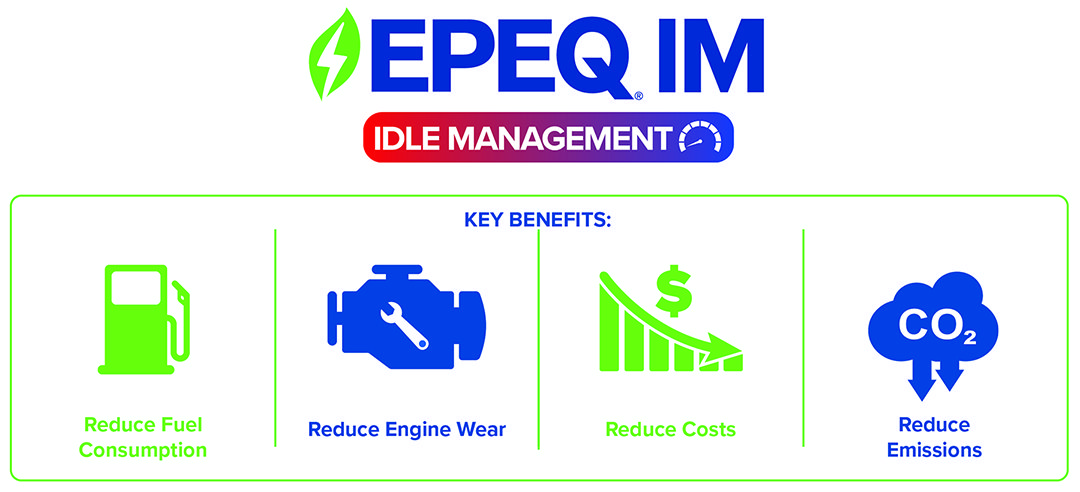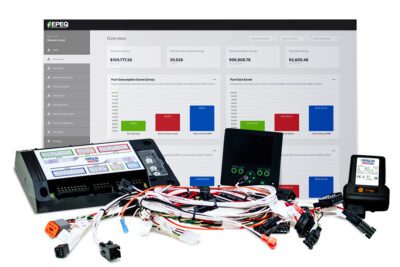Fleet managers are increasingly focusing on an often-overlooked drain on resources: excessive idling. While environmental concerns have traditionally driven idle reduction efforts, a compelling business case is emerging that’s catching the eye of cost-conscious fleet operators across industries.
“Fleets are navigating through a quickly evolving business landscape with numerous factors at play,” explains Dean Strathman, vice president of sales at Vanair. “The pace of change we’re seeing now is unprecedented in our experience, and idle reduction is quickly becoming a key strategy for operational efficiency.”
The Hidden Costs of Idling
Allowing a vehicle to idle might seem inconsequential. However, when multiplied across an entire fleet and over time, the financial impact becomes staggering. Every hour of unnecessary idling burns approximately 0.8 gallons of fuel. For a fleet of 100 vehicles idling just two hours a day, that’s 160 gallons wasted daily.
Idling also accelerates engine wear, leading to increased maintenance and shortened vehicle lifespans. This results in more frequent oil changes, filter replacements, and earlier vehicle replacements, negatively impacting capital expenditures. Additionally, time spent on excessive refueling and maintenance reduces the hours vehicles are available for revenue-generating activities.
One Midwest-based heavy construction fleet learned this lesson the hard way after experiencing premature engine failures due to excessive field idling.
“This customer was facing significant unexpected costs from burned-out engines,” Strathman recounts. “They recognized that finding a way to reduce idling wasn’t just about saving fuel – it was about preserving their entire fleet investment.”
The Idle Management Solution
Vanair’s EPEQ Idle Management (EPEQ IM) system is designed to automatically control vehicle idling based on predefined parameters. The system can power essential functions without running the main engine, dramatically cutting unnecessary idle time.
A large Southwest construction equipment dealership discovered the true value of this approach after analyzing their fleet operations. Despite previously investing in auxiliary power units (APUs), telematics data from their 500 service vehicles showed minimal improvement in idle times.
“They found that operators were still idling vehicles for comfort, running HVAC systems in extreme weather,” Strathman explains. “With EPEQ IM, they can now provide that comfort and maintain productivity without the engine running, truly realizing the benefits they were originally seeking.”

The Financial Upside of Powering Down
For a mid-sized fleet of 50 vehicles, the potential annual savings are substantial:
- Fuel Savings: $364,000 (based on 2 hours reduced idling per day, per vehicle)
- Maintenance Reduction: $75,000 (30% reduction in oil changes and filter replacements)
- Extended Vehicle Lifespan: $250,000 (deferred capital expenditure from extended vehicle life)
- Total Potential Annual Savings: $689,000
These figures demonstrate why fleet managers are increasingly viewing idle reduction not as a cost, but as an investment with a rapid and significant return.
Beyond the Numbers: Operational Benefits
The advantages of implementing an idle management system extend beyond direct cost savings:
- Improved Reliability: Reduced engine wear leads to fewer unexpected breakdowns.
- Enhanced Productivity: Less time spent on refueling and maintenance means more time for revenue-generating activities.
- Operational Flexibility: Systems like EPEQ IM can be customized to meet specific fleet needs.
- Data-Driven Decision Making: Telematics provide invaluable data on vehicle usage for informed fleet management.
- Reduced Noise and Fume Exposure: EPEQ IM’s operation without an internal combustion engine improves work environments.
Overcoming Implementation Challenges
Despite clear benefits, some fleets hesitate to adopt idle management technologies. However, these challenges are often easily mitigated:
- Return on Investment: Many fleets report recouping costs within the first year of implementation.
- Operator Acceptance: Clear communication of benefits and proper training typically lead to quick adaptation.
- Customization: Systems like EPEQ IM can be tailored to specific operational requirements.
- Scalability and Versatility: The EPEQ system offers a scalable “ecosystem” that adapts to diverse fleet needs, including welders, air compressors, hydraulic power, and even EV charging capabilities.

Future-Proofing Your Fleet
As the industry moves towards electrification, investing in idle management technology serves as a bridge strategy. It allows fleets to reduce operational costs and extend the life of current vehicles while the electric vehicle market matures.
The Path Forward
The business case for idle reduction is clear and compelling. From immediate cost savings to long-term operational improvements, the benefits touch every aspect of fleet management. For fleet managers looking to stay competitive in an increasingly challenging business environment, implementing an idle reduction strategy isn’t just smart – it’s becoming necessary.



